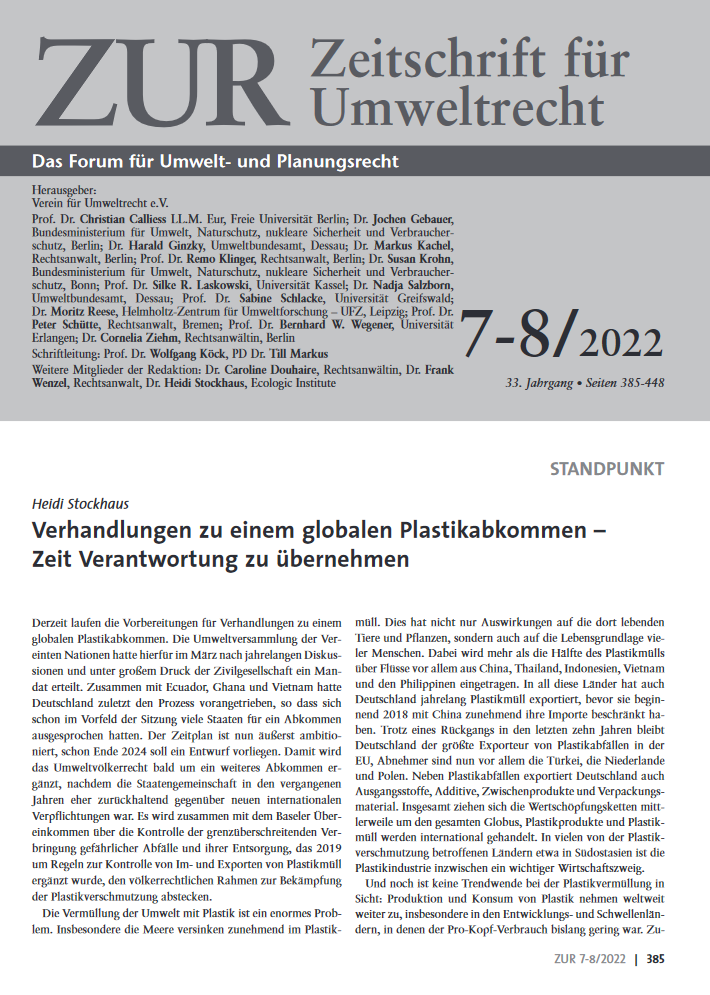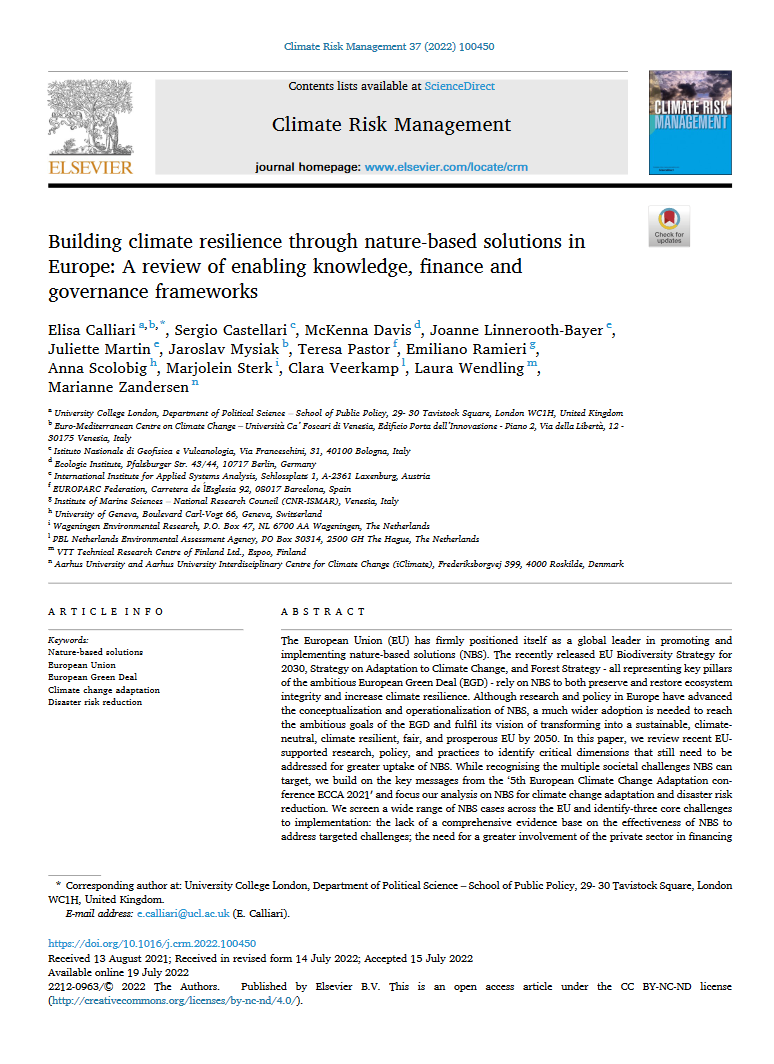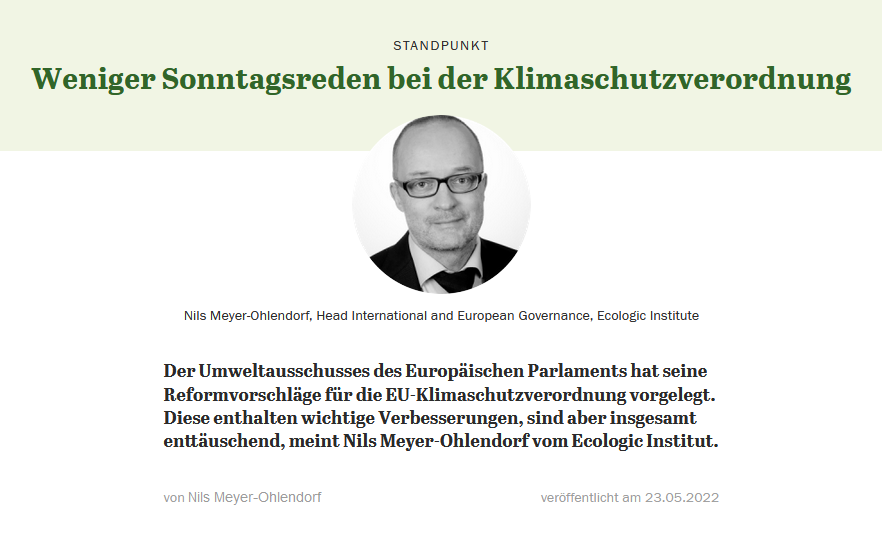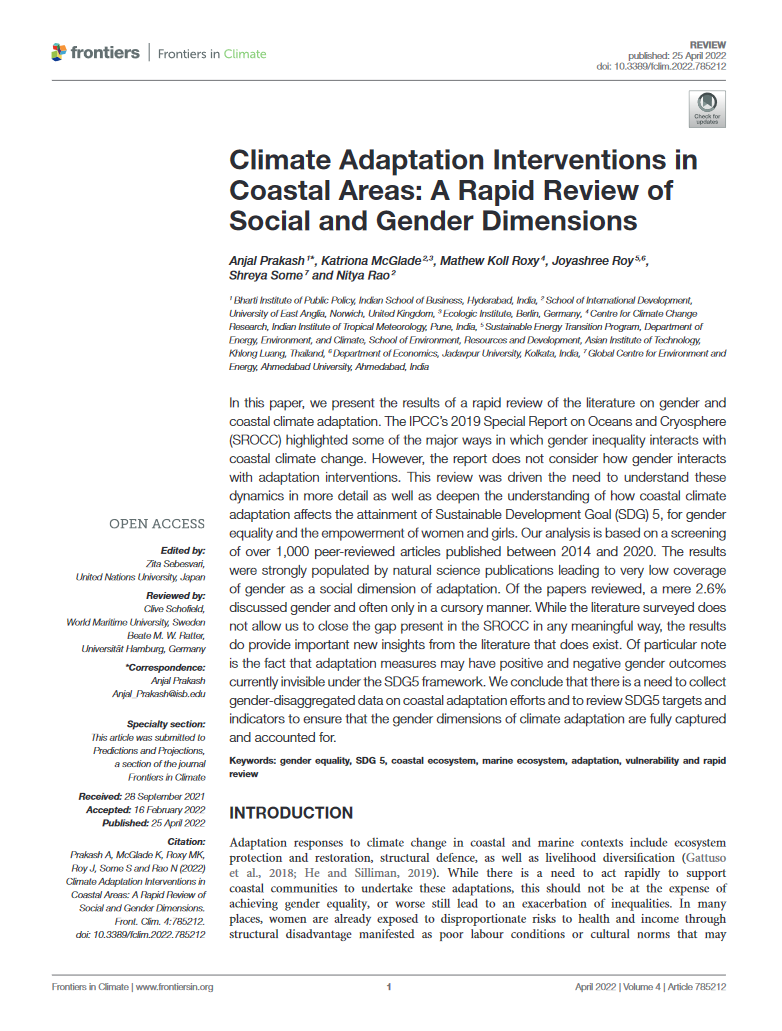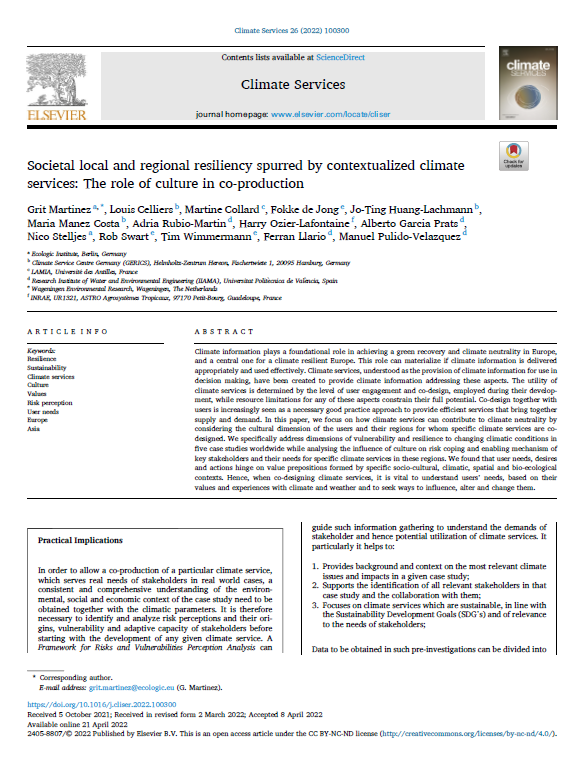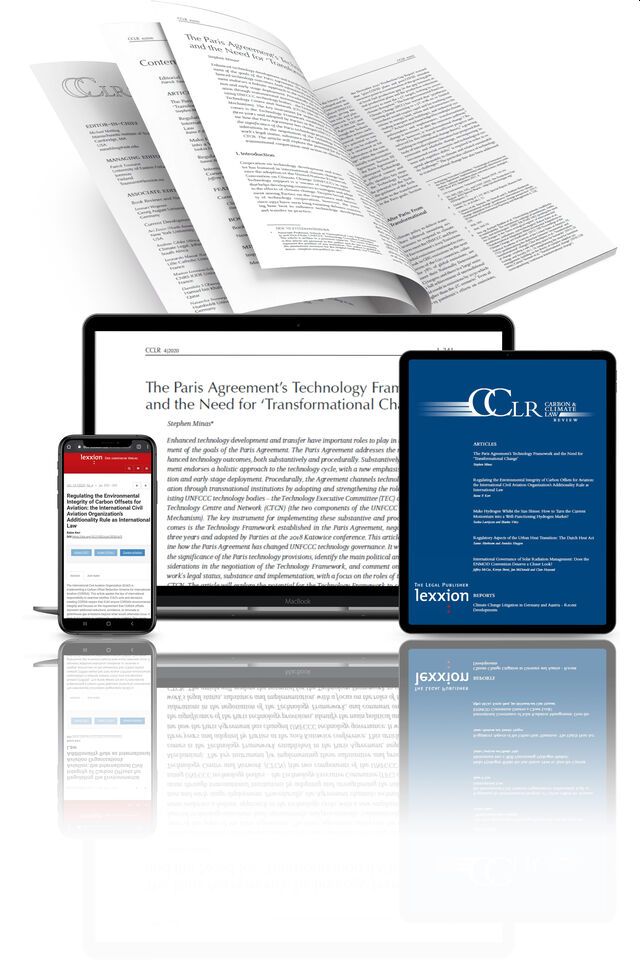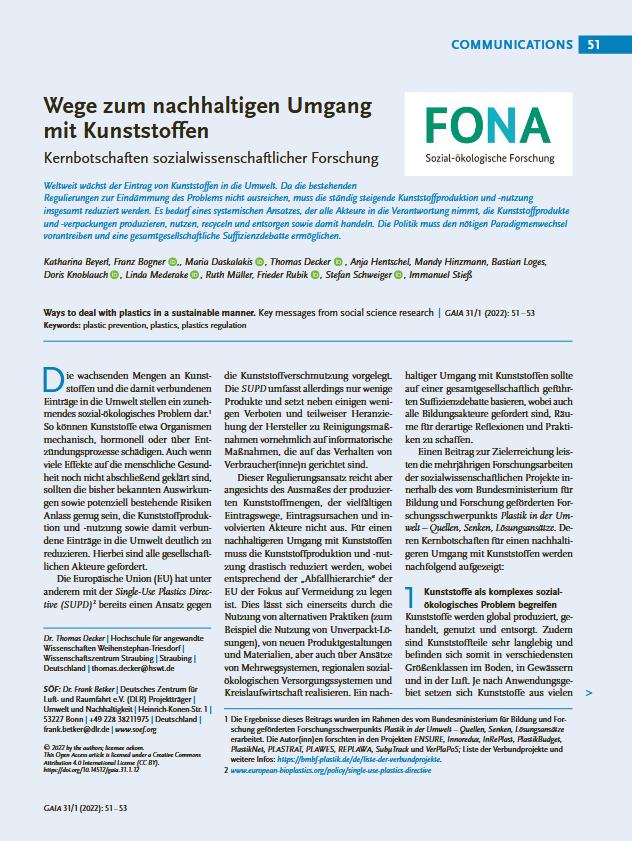Publication:Article
Publication:Article
Publication:Article
Building Climate Resilience through Nature-based Solutions in Europe
A review of enabling knowledge, finance and governance frameworks
Year
Read morePublication:Article
Publication:Article
Publication:Article
Publication:Article
Publication:Article
Publication:Article
Climate Adaptation Interventions in Coastal Areas
A Rapid Review of Social and Gender Dimensions
Year
Read morePublication:Article
Societal Local and Regional Resiliency Spurred by Contextualized Climate Services
The role of culture in co-production
Year
Read morePublication:Article
Publication:Article
Wege zum nachhaltigen Umgang mit Kunststoffen
Kernbotschaften sozialwissenschaftlicher Forschung
Year
Read morePublication:Article
Publication:Article
Publication:Article

